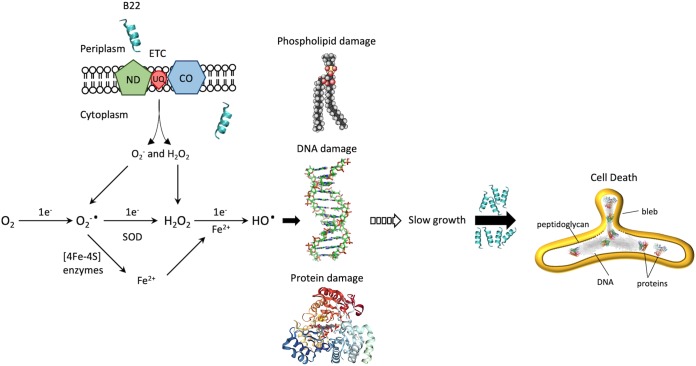FIG 11.
Model for the mechanism of B22-mediated killing. Cathelicidin B22 rapidly binds to cells and permeabilizes the cell membrane, disrupting the membrane-bound aerobic respiratory electron transport chain (ETC) and degrading the proton motive force in such a way that superoxide (O2−) is released from the complex. The scavenging by O2 of an electron from flavin cofactors in the respiratory chain of aerobically respiring bacteria or reduced cytoplasmic flavins provides another source of O2− and H2O2. O2− is normally converted to hydrogen peroxide (H2O2) by superoxide dismutase (SOD). However, Fe2+ can be leached by free O2− from cytoplasmic enzymes with [4Fe-4S] clusters and can react with H2O2 to produce ·OH that damages cellular components, including DNA, membrane lipids, and proteins. This can slow cell growth at nanomolar concentrations and lead to cell death at micromolar concentrations. ND, NADH dehydrogenase; CO, cytochrome oxidase; UQ, ubiquinone.

